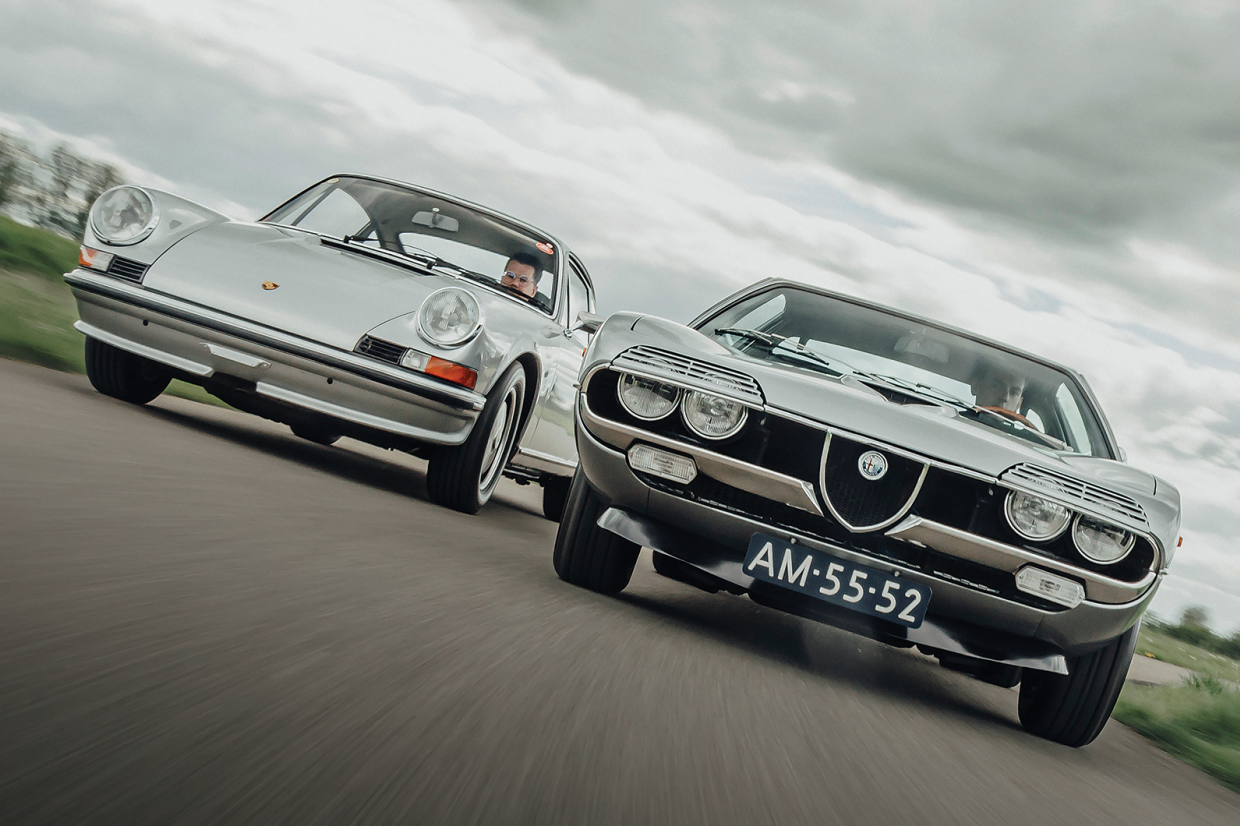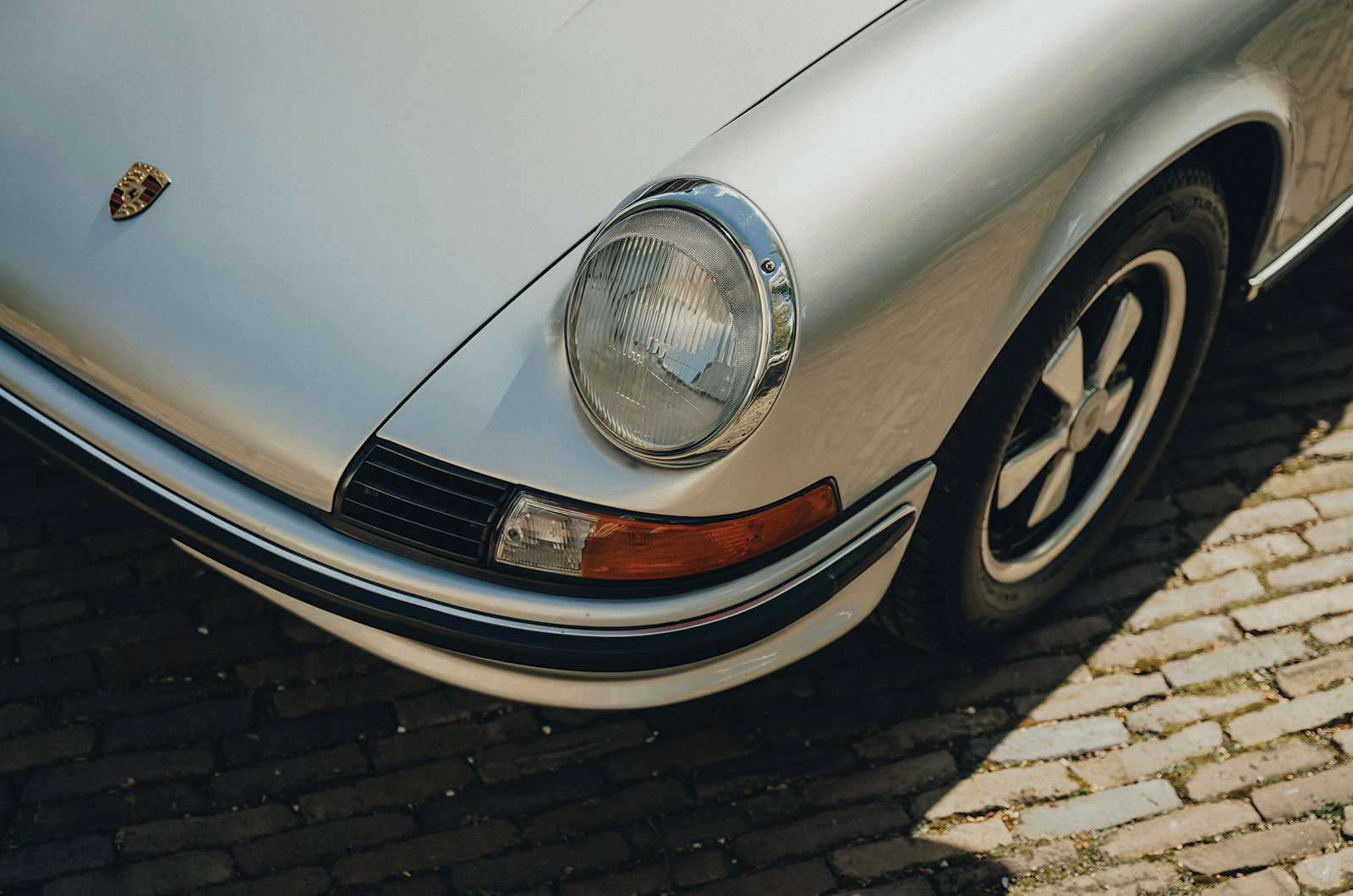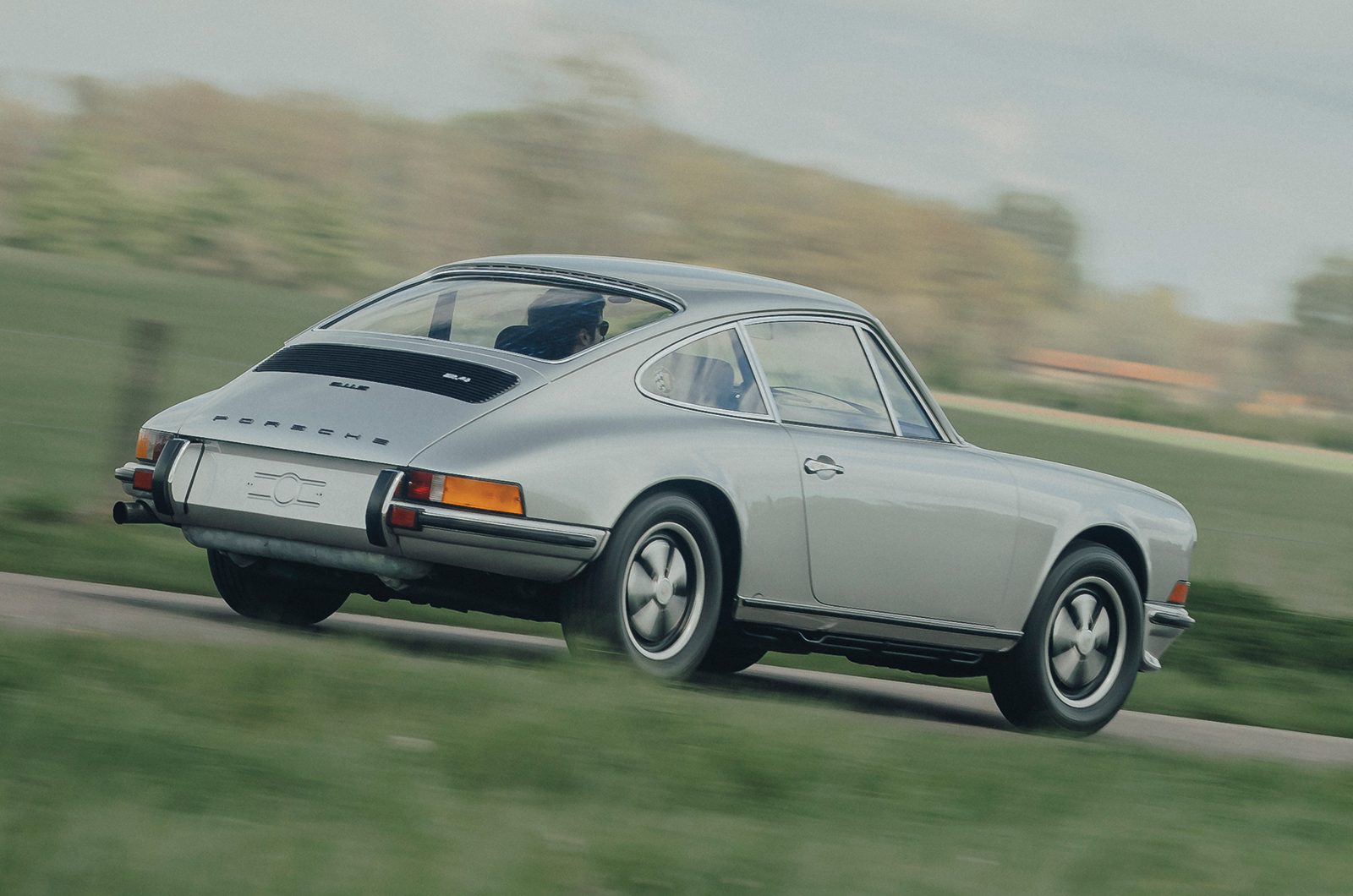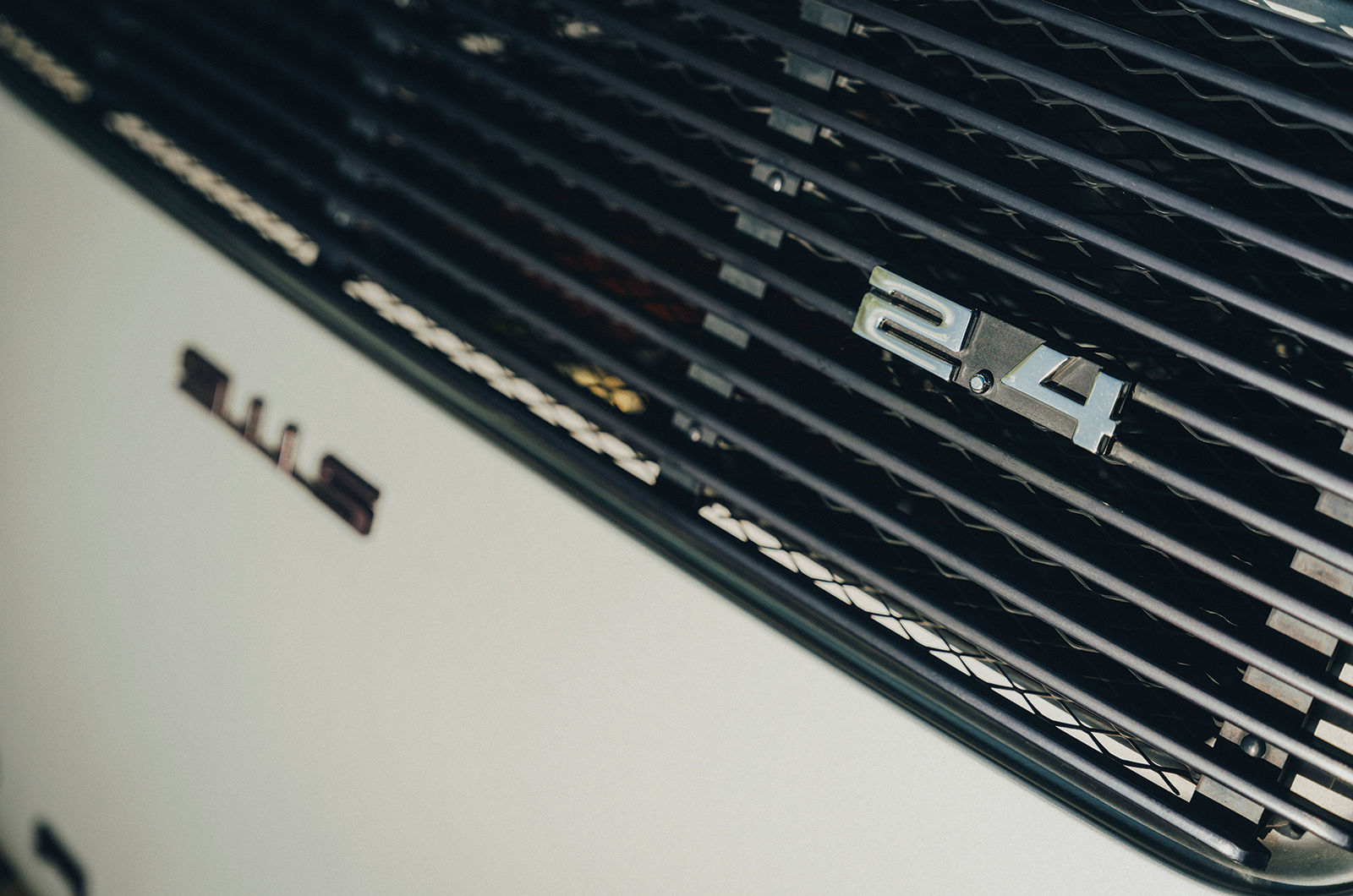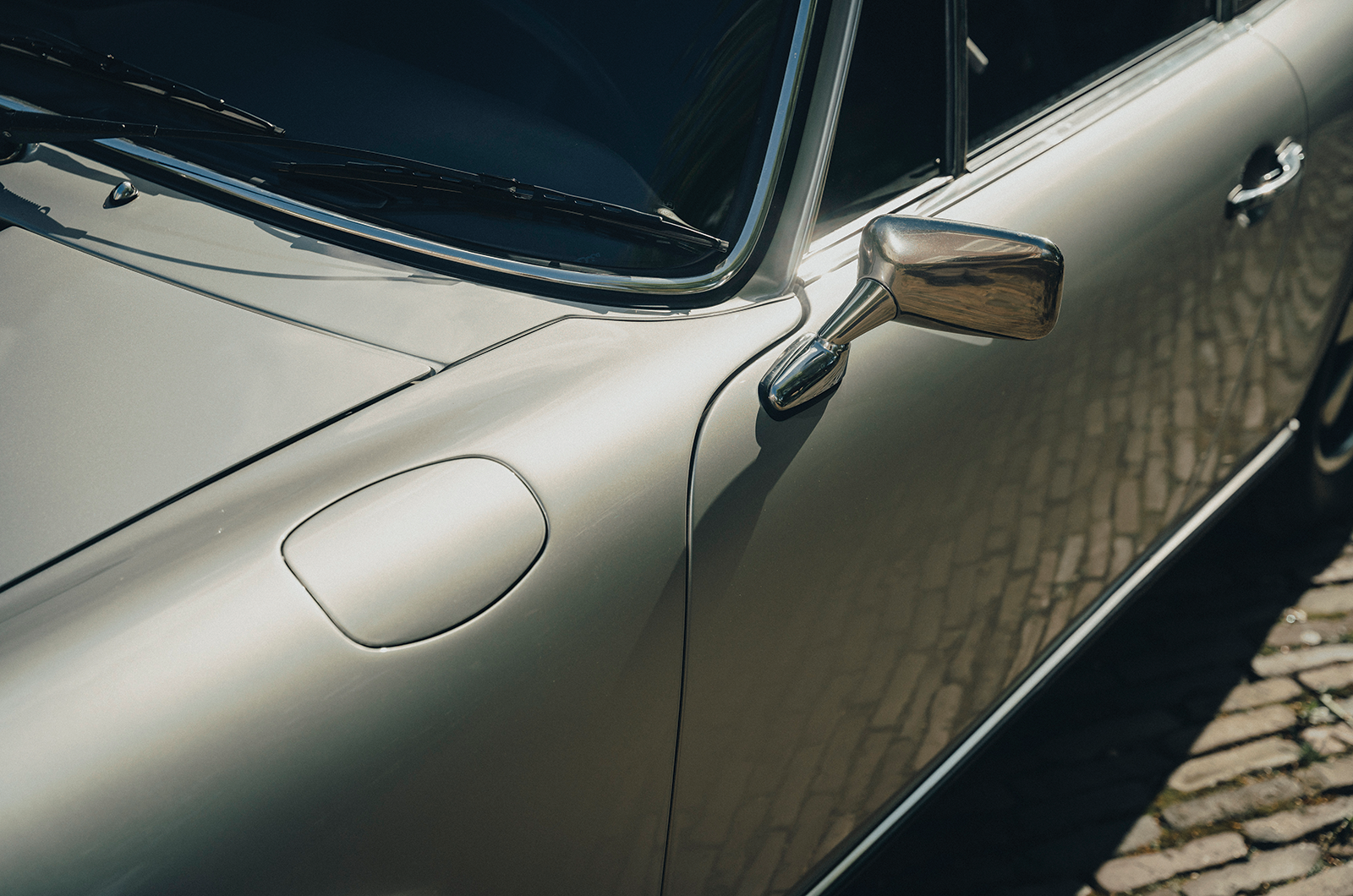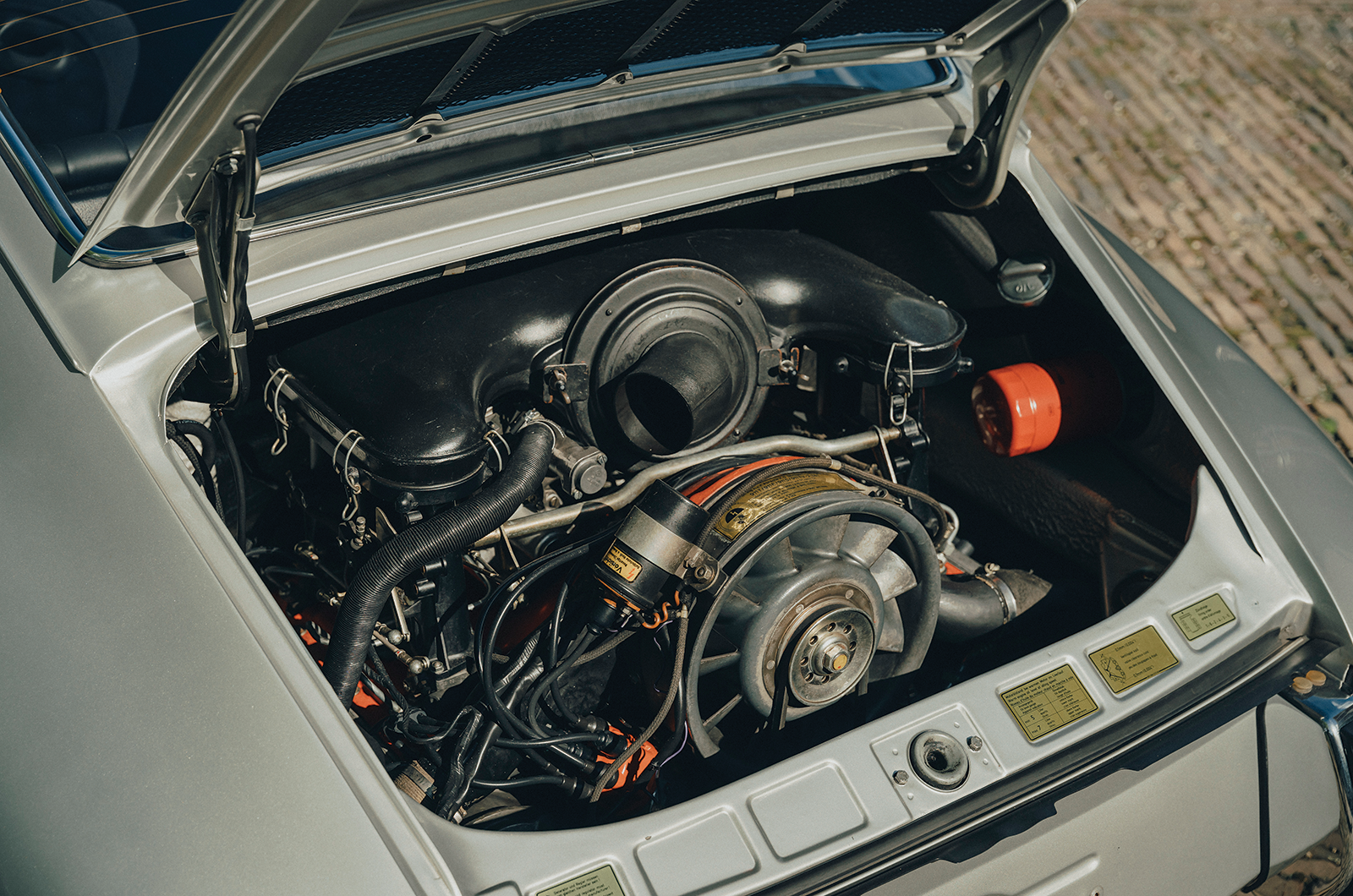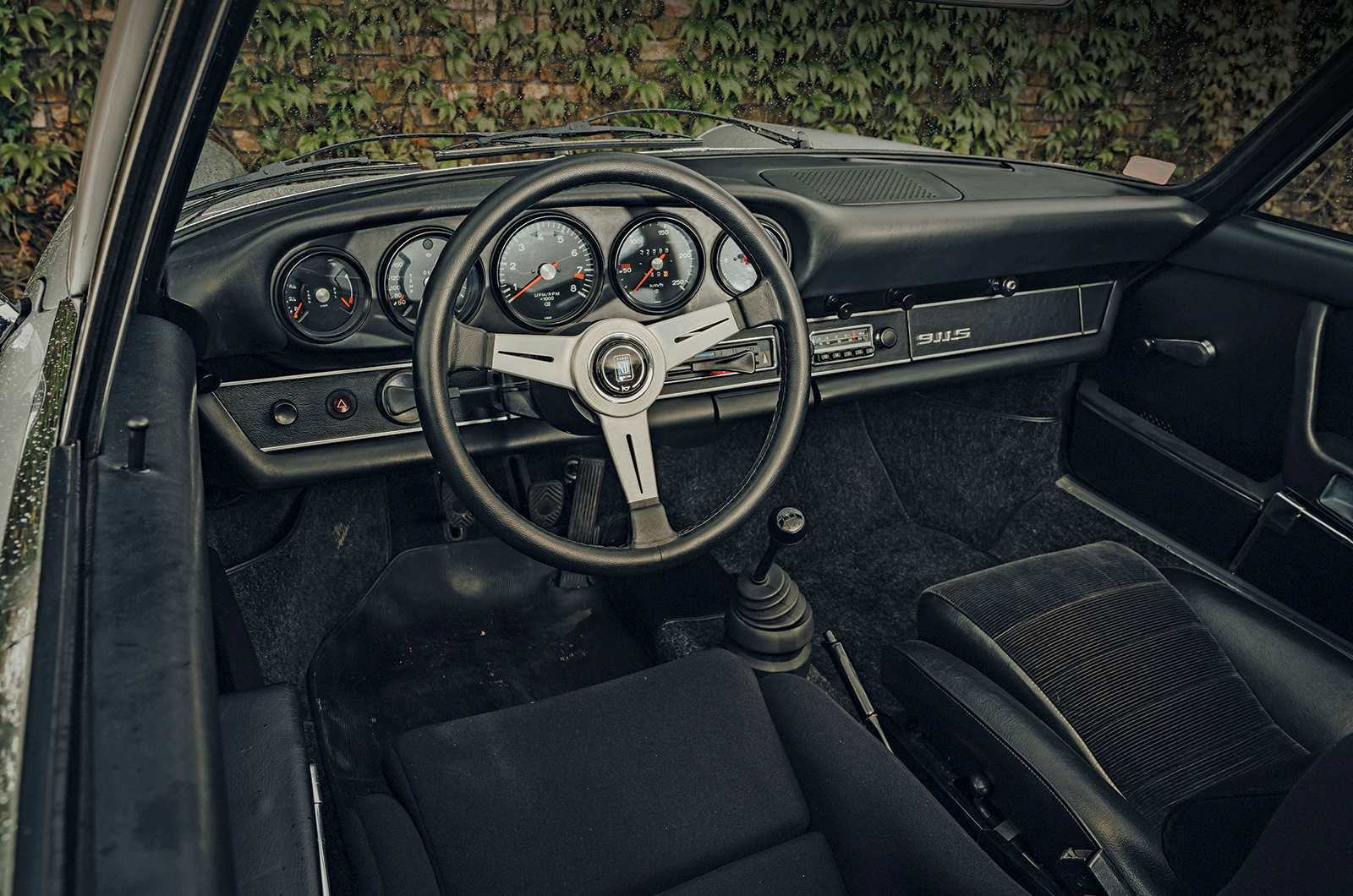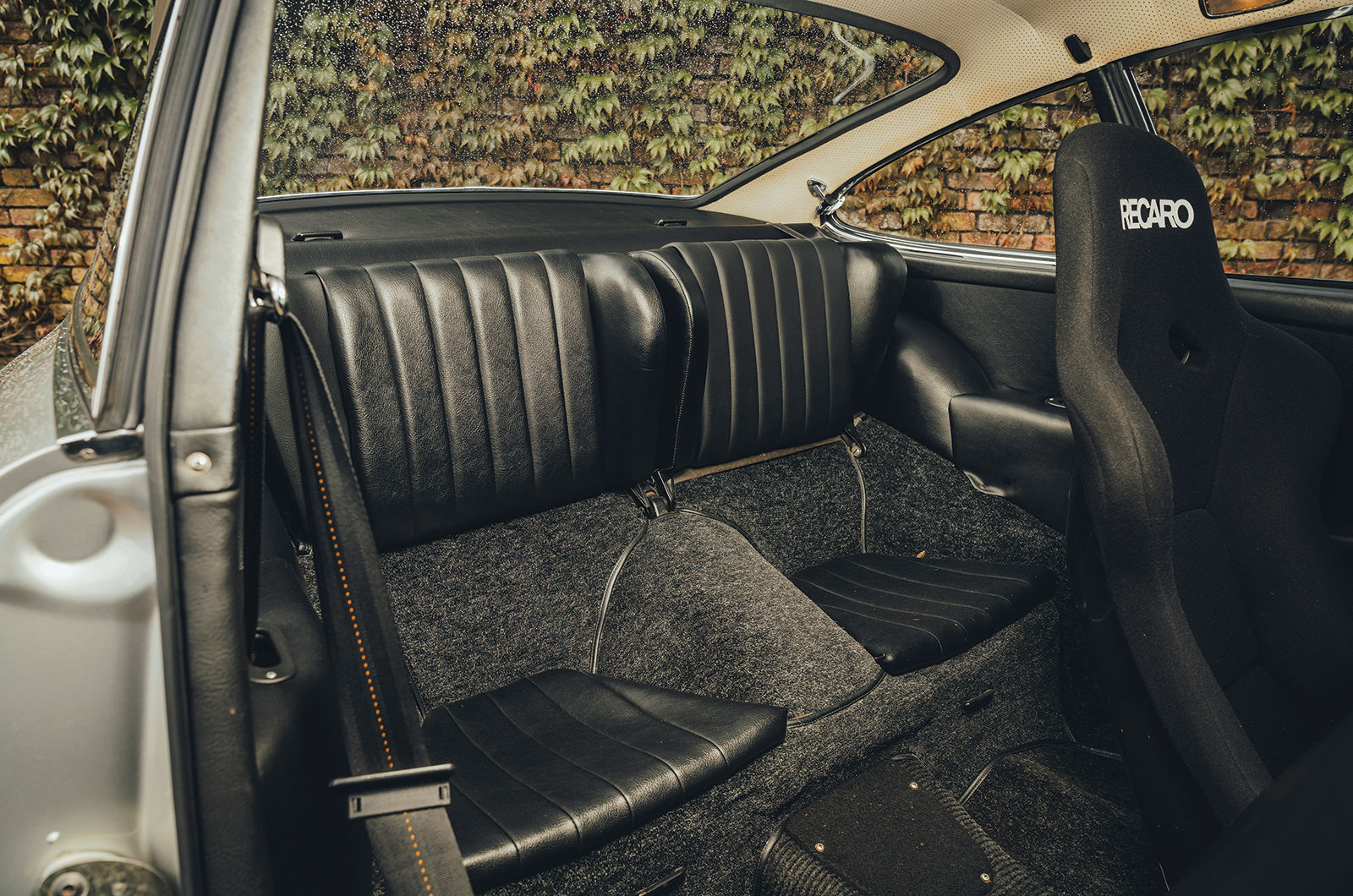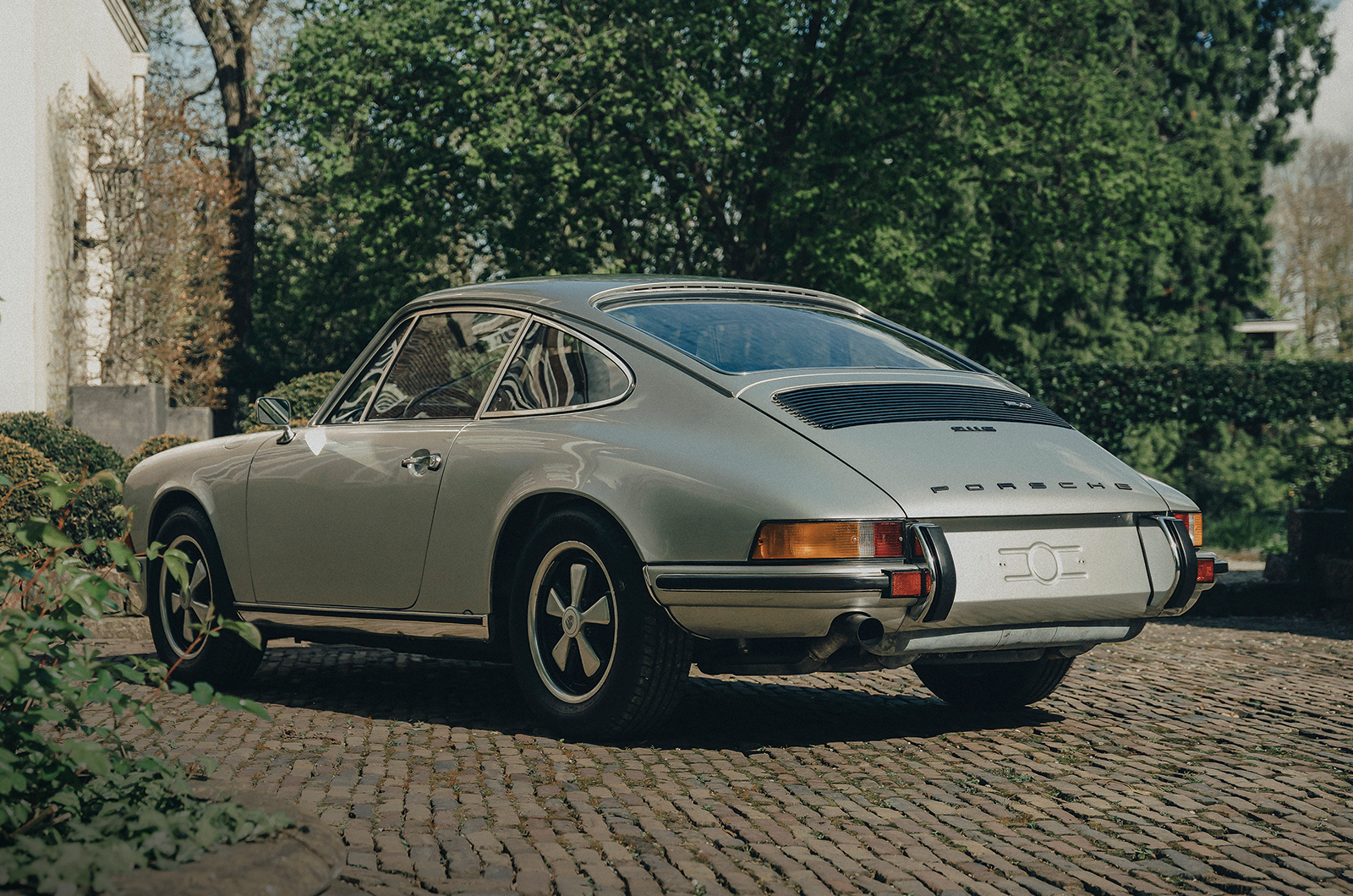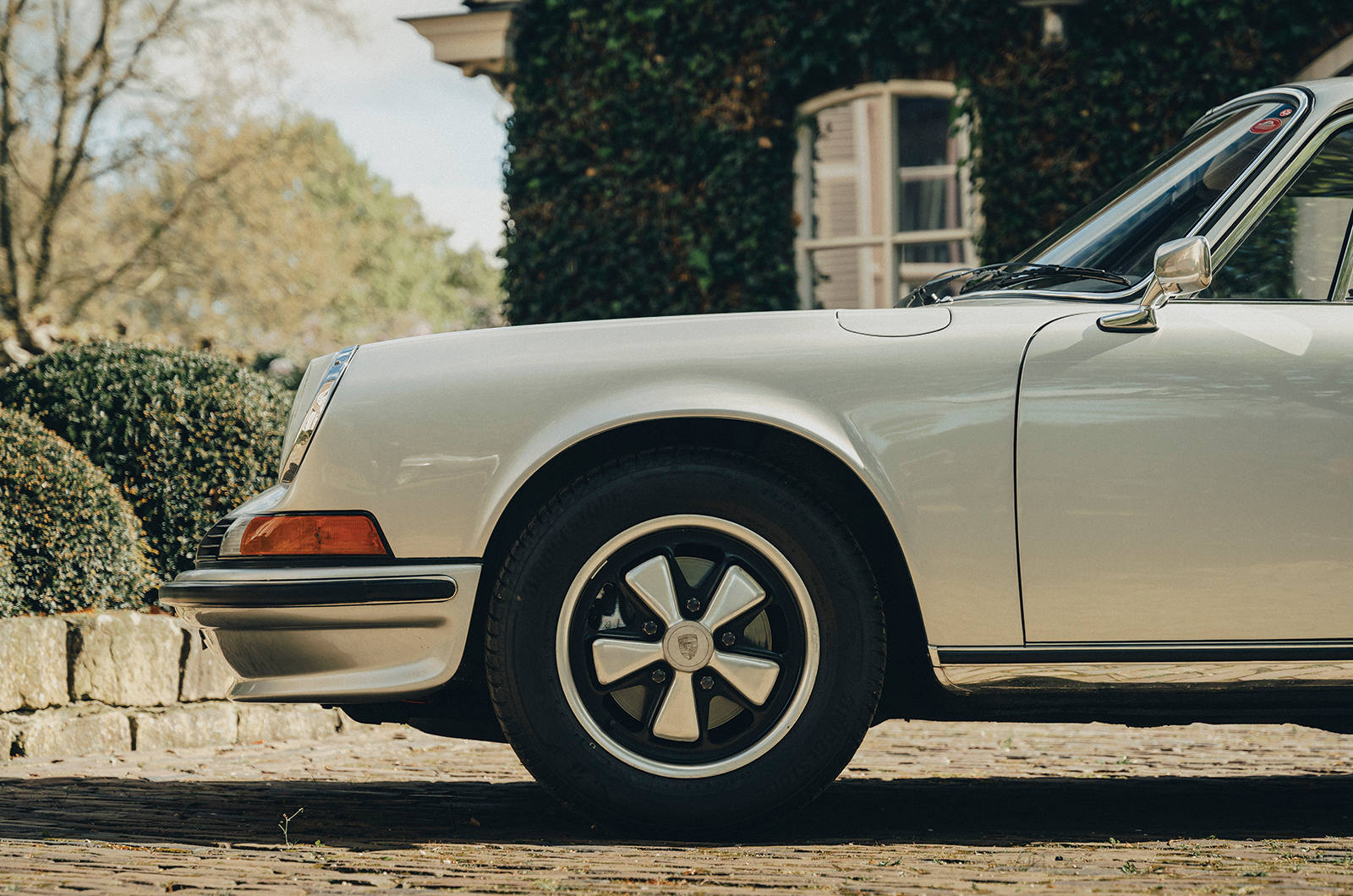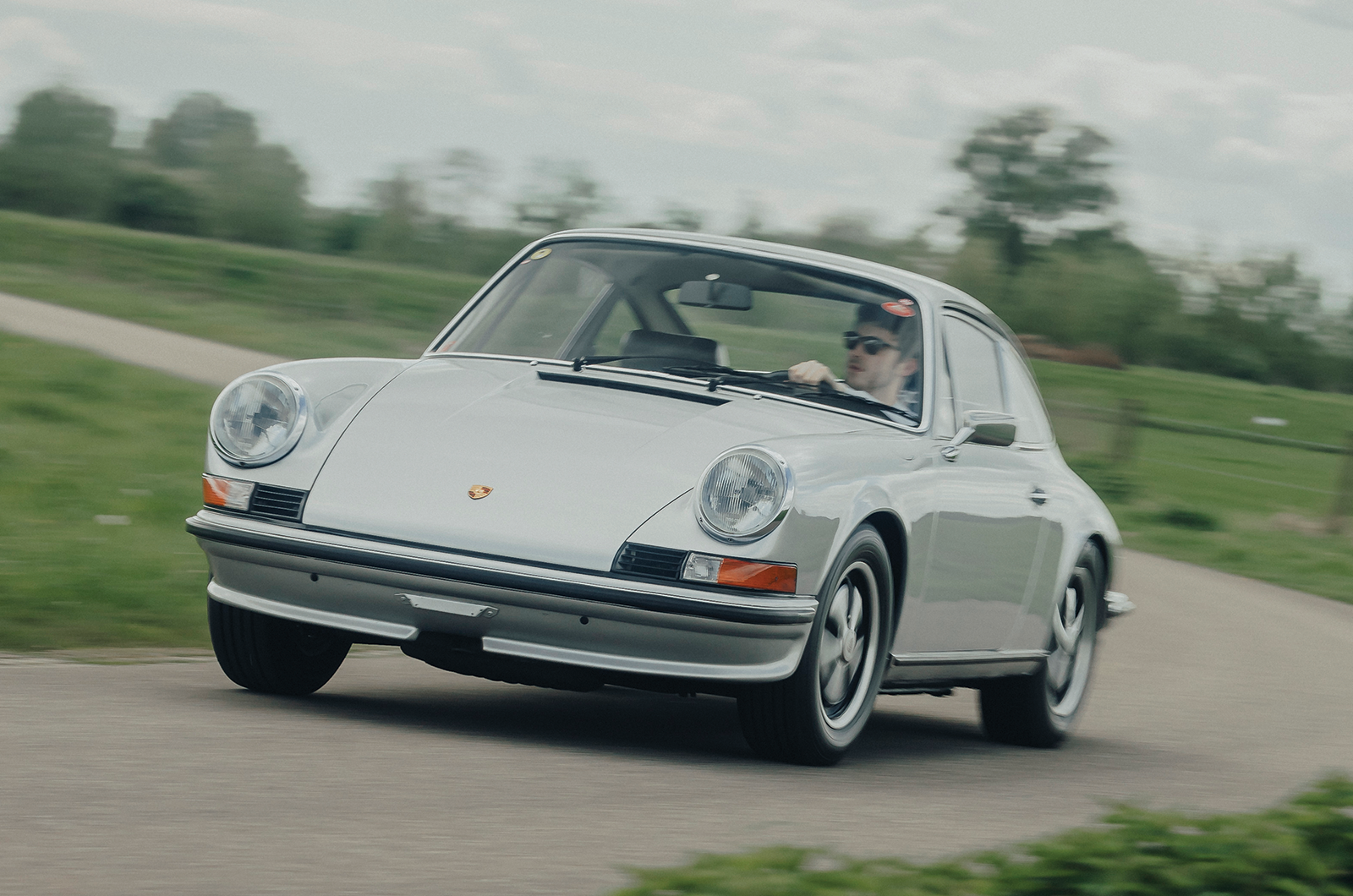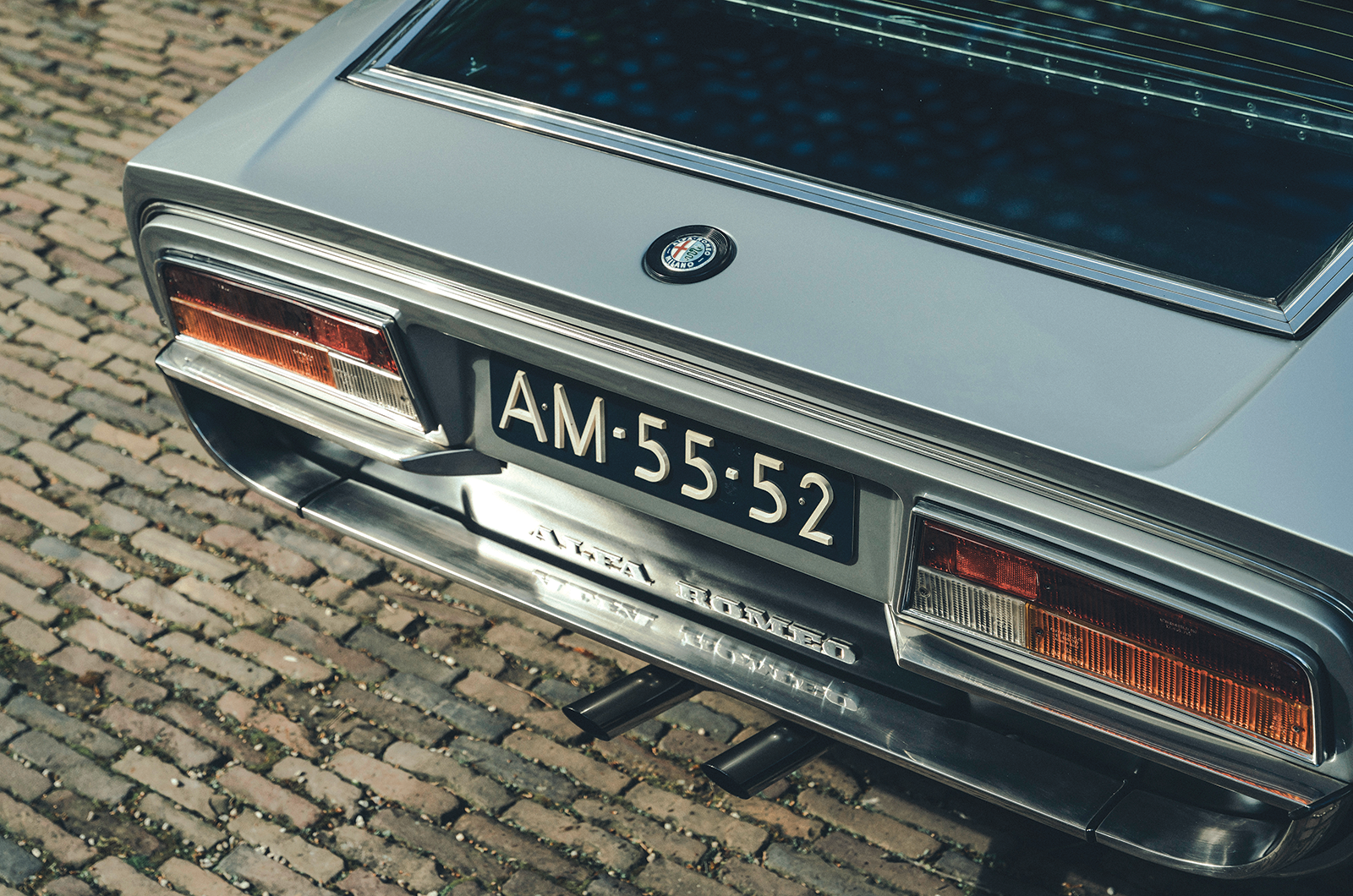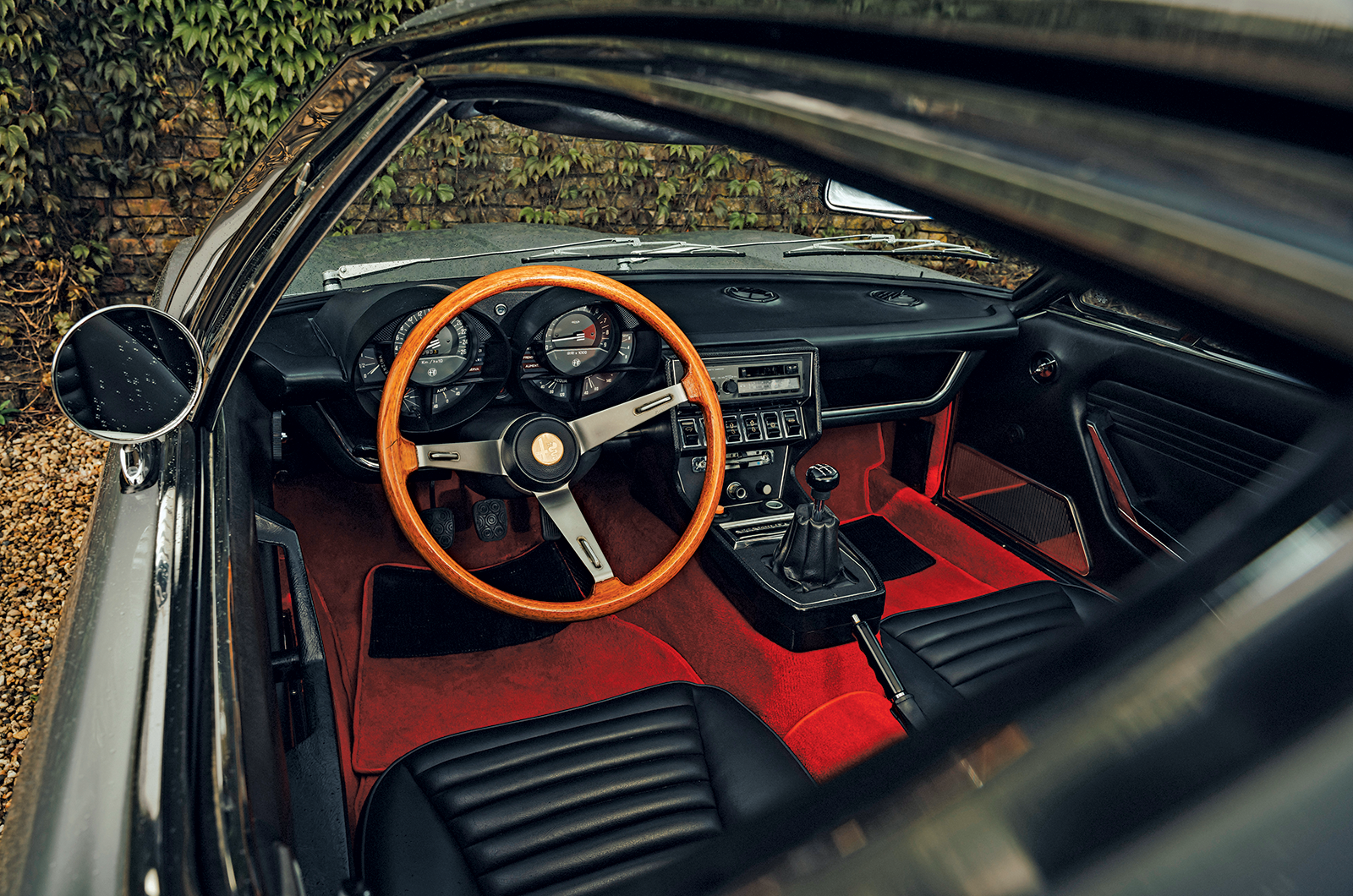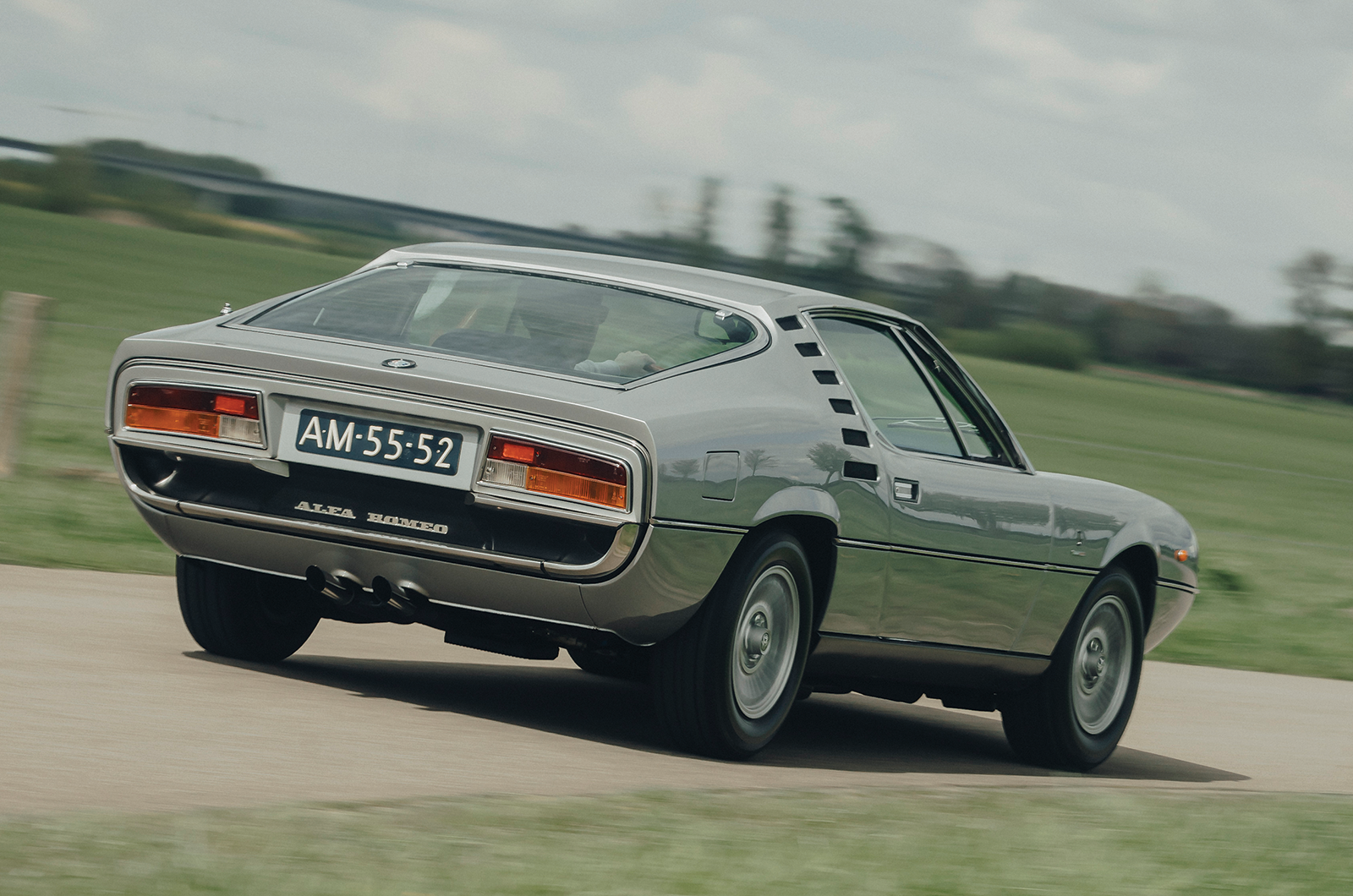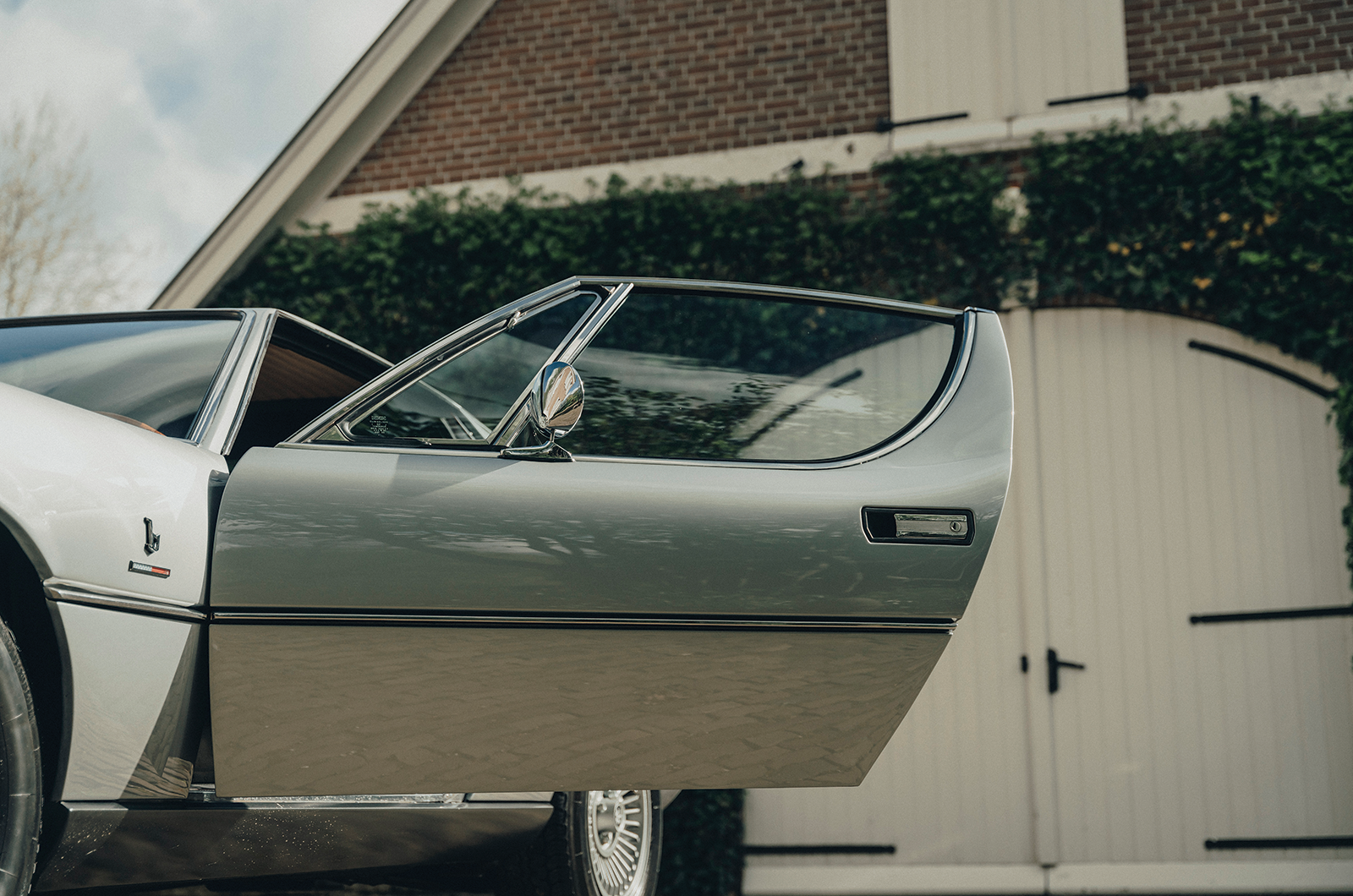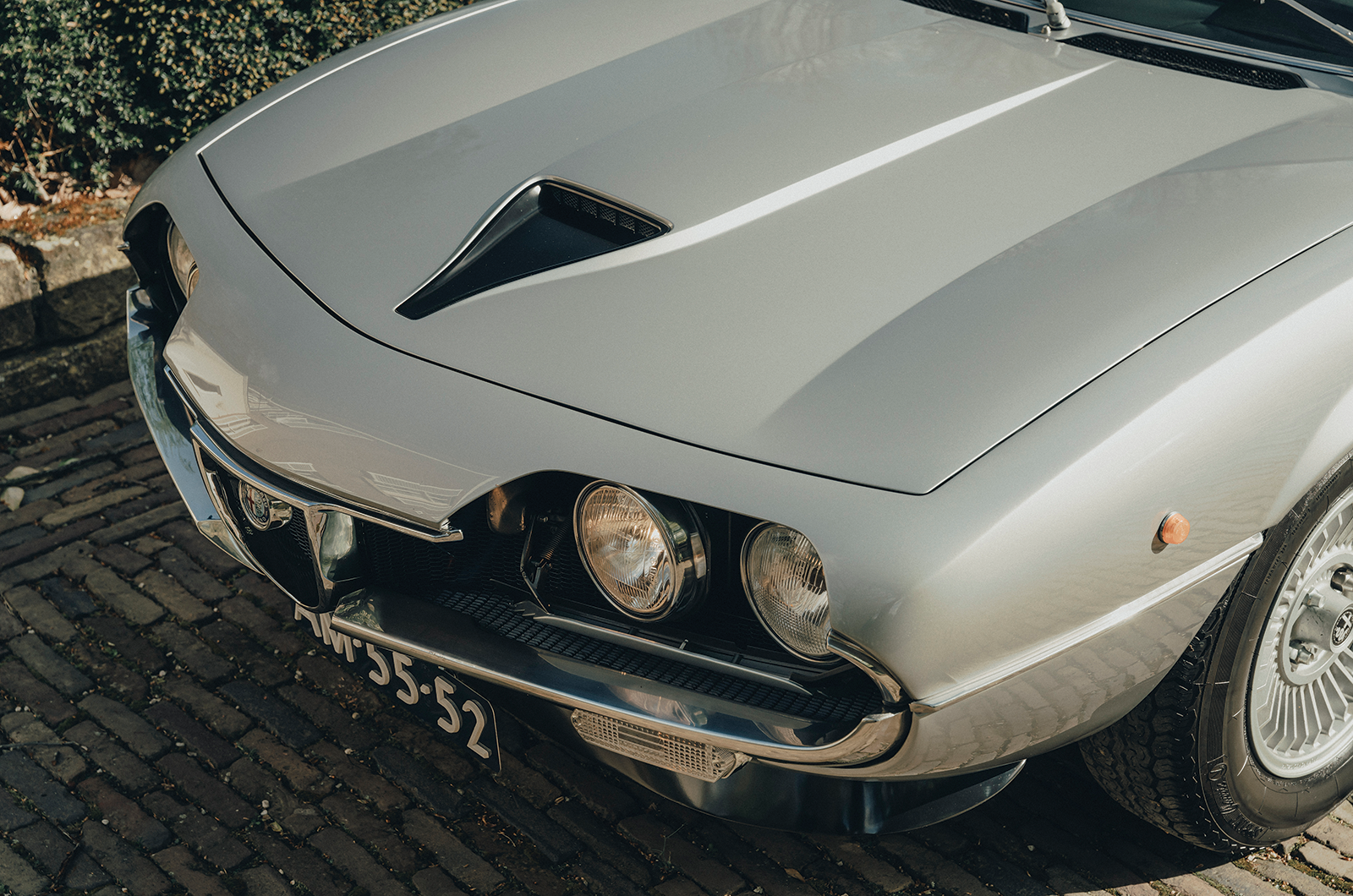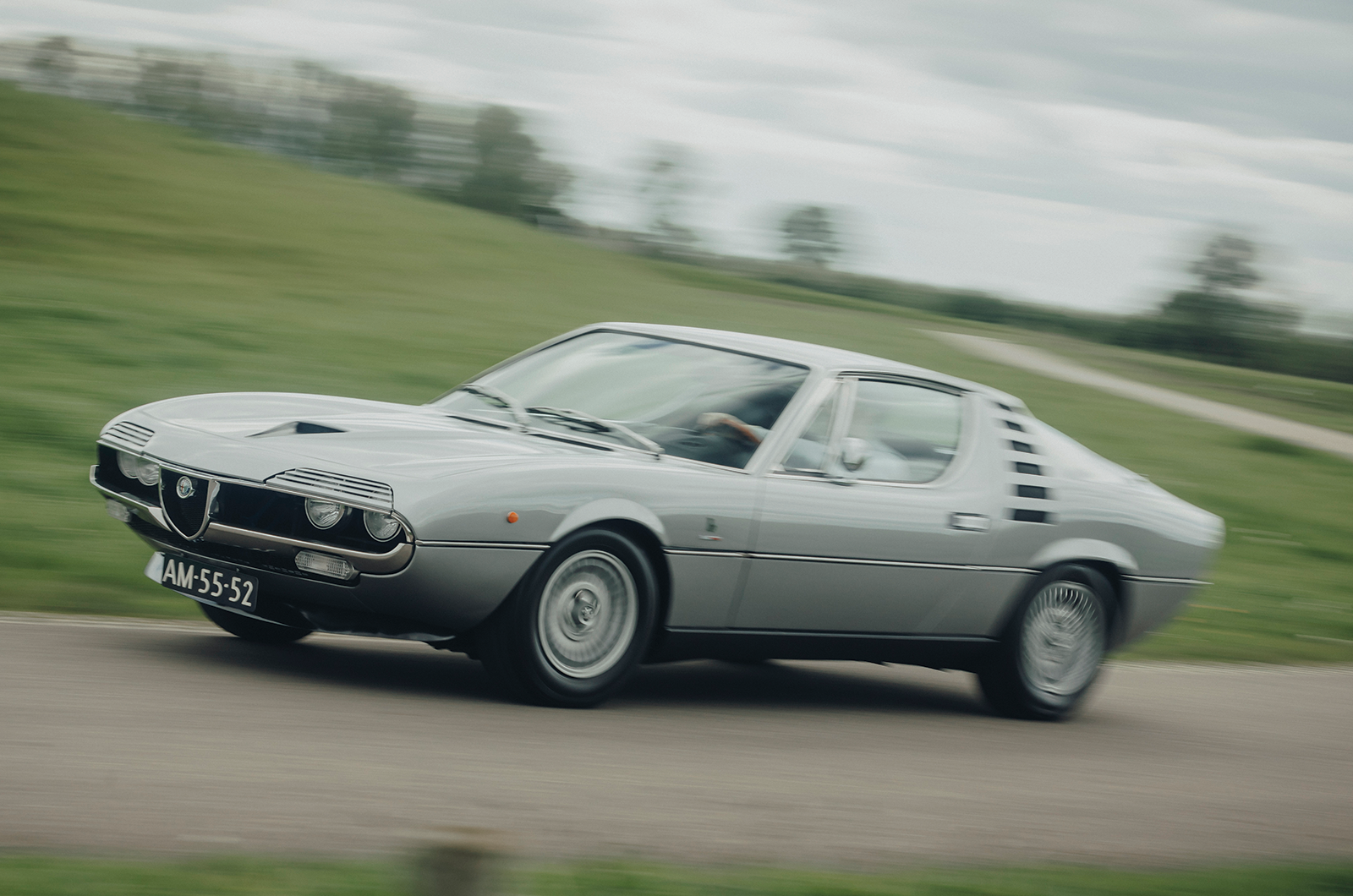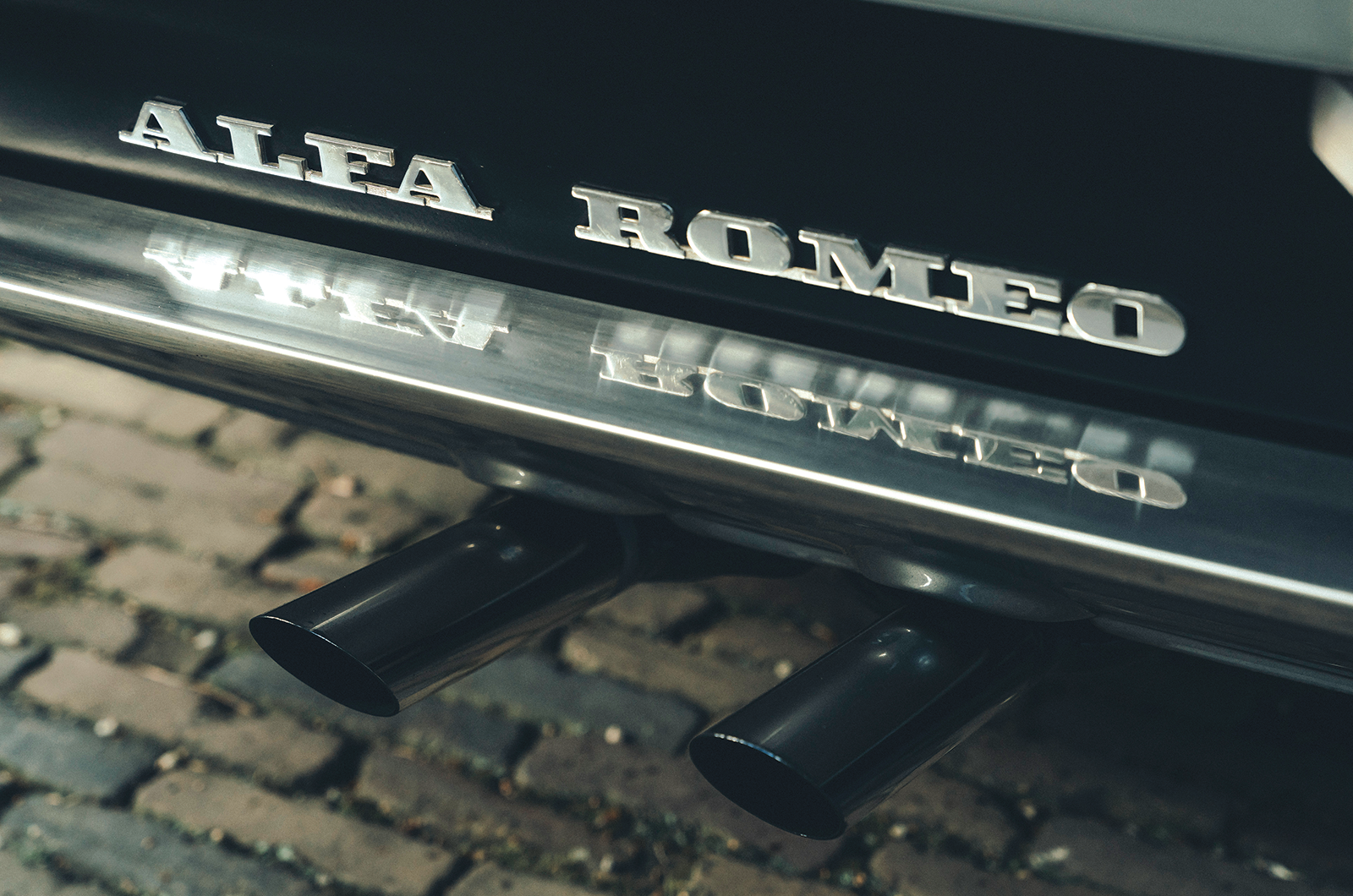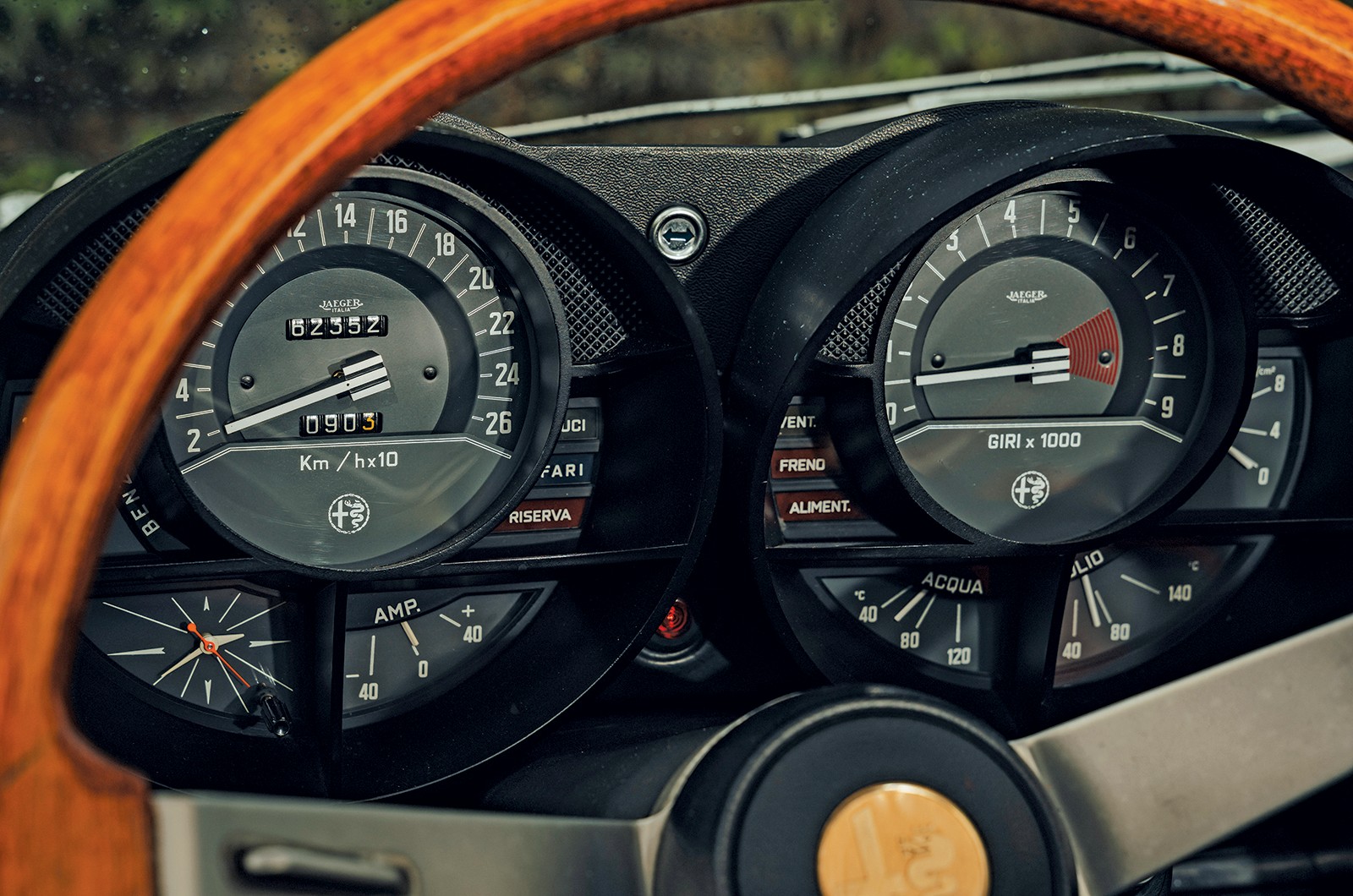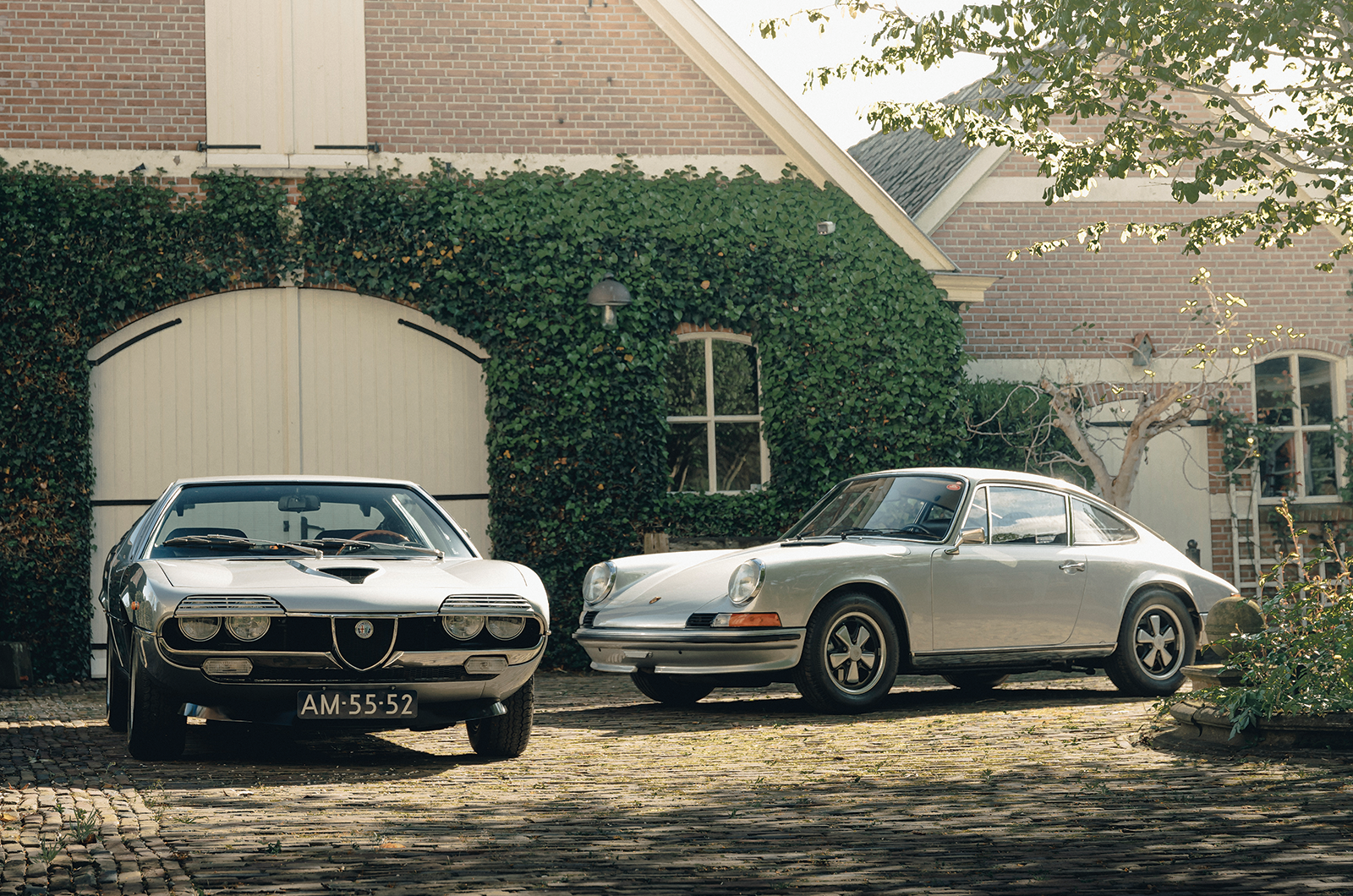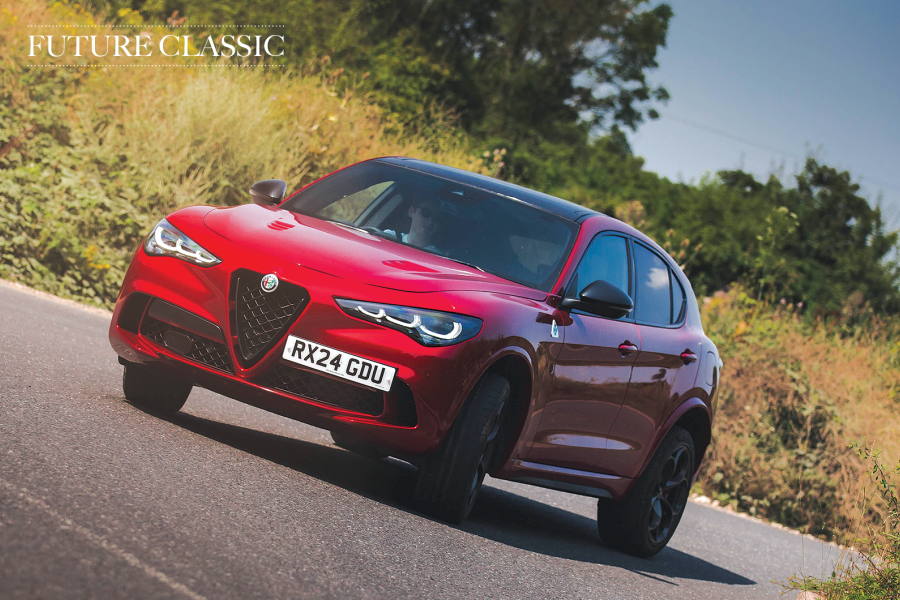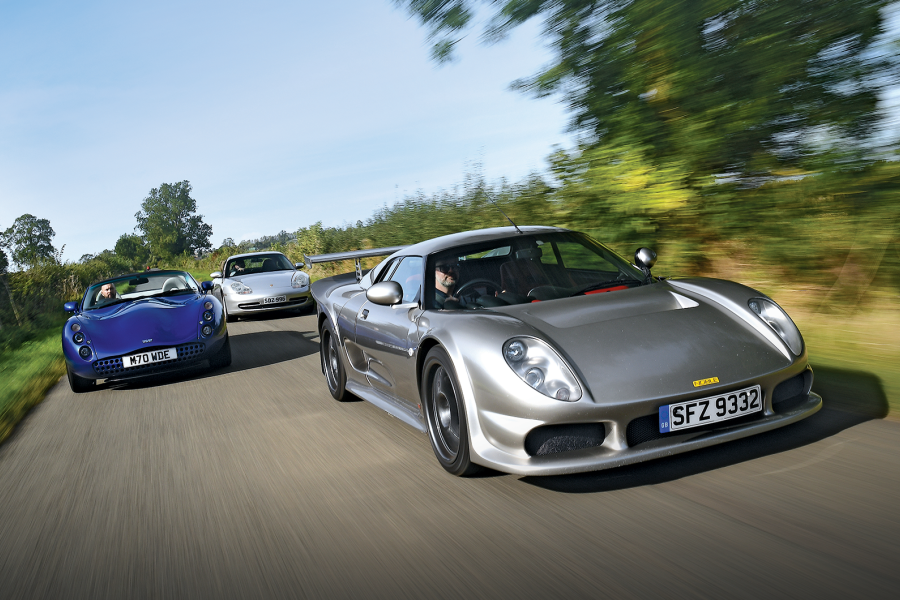The ancillaries are controlled by neatly laid out and clearly marked rocker switches, while metal accents on the doors, dashboard and steering wheel add flickers of glamour.
The Italian stereotype this interior does follow is that it is both totally up to date and exactly the right side of the line at which flashy becomes gaudy.
It’s solidly built, too, out of plush materials. Stepping into an Alfa Romeo Montreal gives an impression of an interior that’s just-so.
No ‘Italian driving position’ concessions here; everything is straightforward to find and easy to reach.
The Alfa Romeo Montreal’s cabin is executed with flair, and quality materials give a special feel. The driving position is good and the view out unhindered
The beautiful, ribbed seats place you at a height where you have brilliant vision over the car’s low beltline and looking straight down the long, NACA-ducted bonnet.
If you were to walk up to a Montreal and sit in it parked, and then do the same with a 911, all but the most fanatical of Porsche fans would agree that the Alfa Romeo has the better-designed and more special-feeling cabin.
The 911 feels rather old-hat and more than a bit compromised in comparison.
These aren’t cars for standing still, however.
There’s less space in the Alfa Romeo Montreal than in the Porsche 911
Your first mile in the Alfa is dominated by its ergonomic rightness and comfort, while in the Porsche you’re adjusting to its eccentricities.
Only the weight of the Alfa Romeo Montreal’s steering lessens its drivability: it utterly refuses to dry steer and really begs for a power-assisted rack rather than a manual box.
But its gearshift is quick, satisfying and easy to navigate, while even at town speeds the V8 starts to snarl, hinting at its aural potential.
It’s a refined motor, though, and it doesn’t burble like an American V8 thanks to its small cylinders; instead it fires on the button and idles smoothly.
The Alfa Romeo Montreal rides well and sounds great
Starting the Porsche 911 requires a touch more patience with the starter motor and a bit of feathering of the throttle, and its initial engine note is that familiar, clattering air-cooled clamour rather than anything more exotic.
The gearlever is usefully close to the steering wheel thanks to a tall, spindly shaft, but this also gives it a relatively long throw and it can take a few minutes before you’re making your way around the shift pattern with confidence.
Straight away, though, you can feel the absolute rightness of the 911’s steering: it’s usefully light at low speeds thanks to the paucity of weight over the front axle, but quick and feelsome.
The Alfa Romeo Montreal’s Lamorghini-esque ‘bull horn’ doors
Both cars come into their element on the open road, albeit with distinct characters.
The Alfa’s exhaust note ascends to a delicious roar as the surprisingly tractable, smooth engine punches it forward.
It feels brisk – 0-60mph takes 7.5 secs – but long gearing and the car’s general refinement prevent it from ever feeling too raucous.
It continues to soak up bumps brilliantly well at speed, while its steering reaches a satisfying weight and transmits useful feedback, if always exhibiting a small amount of play.
The Alfa Romeo Montreal’s retractable headlight covers are a stylish feature
But while the Montreal feels eminently comfortable and stable at speed, start throwing it into tighter corners and it becomes a lot less composed.
There is a dose of understeer, but more disappointing is a roll angle at odds with the car’s exotic image.
Giulias roll, too, and enjoy a glowing reputation for their handling, but in that lighter car it feels like the agile side-to-side dive of a slalom skier.
With extra kilos to carry, the Alfa Romeo Montreal can’t shift its weight so quickly, and the driver is left dishearteningly aware of the car’s inertia.
The Alfa Romeo mirrors closely the 1967 show concept revealed in Montreal
Thicker anti-roll bars and other means of firming up the suspension have since been developed by third parties, but it’s a shame that Alfa couldn’t do better in either the car’s near-four-year development run or across its seven years in production.
The vast majority of Montreals were sold in the first two years (for which Alfa could thank the 1973 oil crisis), which perhaps explains why Arese gave up on developing the car so quickly.
Predictably, the Porsche 911 feels superb on the same twisting roads where the Alfa Romeo became uncomfortable.
Its low centre of gravity allows it to corner far flatter than the Montreal, even though its ride is only slightly firmer.
‘Even at town speeds, the Alfa Romeo Montreal’s V8 starts to snarl’
This poise and agility starts a virtuous circle that creates much more responsive steering and a car more comfortable under heavy braking.
Once revved a little harder, the flat-six lets out its paper-tearing howl and, though slightly more peaky in its delivery than the Alfa Romeo, adds an extra edge of excitement to its acceleration.
One second and a bit faster to 60mph is noticeable, but further than that you really feel the speed: it is slightly less refined, but more exciting.
‘The Alfa Romeo Montreal’s interior is both totally up to date and exactly the right side of the line at which flashy becomes gaudy’
Where these two do fit to type is in the brio of the Alfa’s design against the 911’s understated, elegant style: there’s no denying the Porsche doesn’t have the same visual impact, nor makes its driver feel quite so special.
Anyone would be wooed by the Alfa Romeo Montreal’s initial charms, and the fact it’s such a thoroughly agreeable car to drive day-to-day and over distance allows you to dismiss the 911 as a bit of an obvious answer… until you drive it.
If you’re seeking pure driving pleasure – which many buyers of small 2+2 sports coupés surely are – the Porsche 911 remains the pick; it’s the default choice for good reason.
But for drama, curiosity and character, everyone should drive a Montreal at least once. Like all Alfas, it’s a car with compromises – just not the ones we have become used to.
Images: Max Edleston
Thanks to: Nick Aaldering, Gallery Aaldering
Factfiles
Porsche 911S 2.4
- Sold/number built 1972-’73/5054
- Construction steel monocoque, steel and aluminium body panels
- Engine magnesium-block, alloy-heads, sohc-per-bank 2341cc flat-six, Bosch fuel injection
- Max power 190bhp @ 6500rpm
- Max torque 159lb ft @ 5200rpm
- Transmission five-speed manual, RWD
- Suspension independent, at front by struts, longitudinal torsion bars rear transverse torsion bars, semi-trailing arms, telescopic dampers; anti-roll bar f/r
- Steering rack and pinion
- Brakes ventilated discs, with servo
- Length 13ft 7¼in (4146mm)
- Width 5ft 3½in (1613mm)
- Height 4ft 4in (1320mm)
- Wheelbase 7ft 5½in (2273mm)
- Weight 2409lb (1090kg)
- Mpg 23
- 0-60mph 6.2 secs
- Top speed 145mph
- Price new £5675 (1972)
- Price now £75-150,000*
Alfa Romeo Montreal
- Sold/number built 1970-’77/3925
- Construction steel monocoque
- Engine all-alloy, dohc-per-bank 2593cc 90° V8, Spica fuel injection
- Max power 200bhp @ 6500rpm
- Max torque 173lb ft @ 4750rpm
- Transmission five-speed manual, RWD
- Suspension: front independent, by double wishbones, anti-roll bar rear live axle, twin trailing arms, A-bracket; coil springs, telescopic dampers f/r
- Steering recirculating ball
- Brakes ventilated discs, with servo
- Length 13ft 10in (4216mm)
- Width 5ft 6in (1676mm)
- Height 3ft 11½in (1204mm)
- Wheelbase 7ft 9in (2362mm)
- Weight 2800lb (1270kg)
- Mpg 17
- 0-60mph 7.5 secs
- Top speed 136mph
- Price new £5549 (1972)
- Price now £45-140,000*
*Prices correct at date of original publication
Enjoy more of the world’s best classic car content every month when you subscribe to C&SC – get our latest deals here
READ MORE
Alfa Romeo SZ vs Montreal: bucking the trend in style
Porsche 911 turbo racers: blown away
Your classic: Porsche 911 (993) C4S
Charlie Calderwood
Charlie Calderwood is Classic & Sports Car’s Features Editor
